Francesco Turchini
Fine-Grained Adversarial Semi-supervised Learning
Oct 12, 2021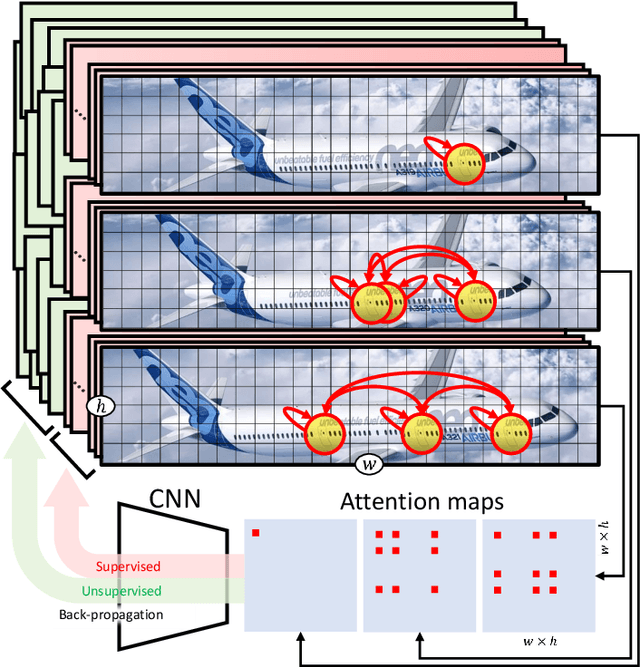

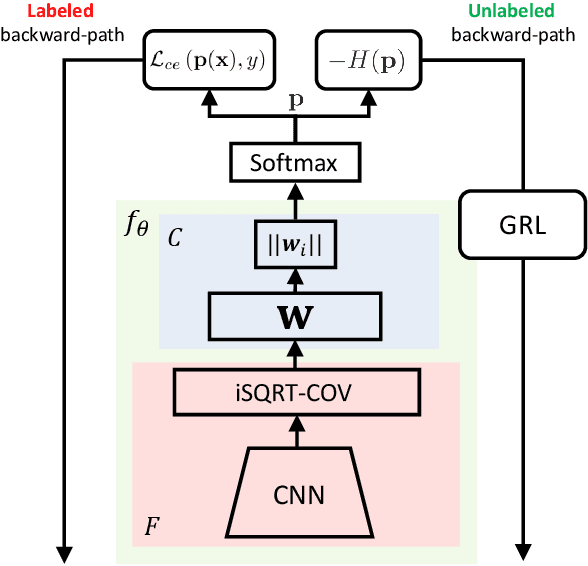

Abstract:In this paper we exploit Semi-Supervised Learning (SSL) to increase the amount of training data to improve the performance of Fine-Grained Visual Categorization (FGVC). This problem has not been investigated in the past in spite of prohibitive annotation costs that FGVC requires. Our approach leverages unlabeled data with an adversarial optimization strategy in which the internal features representation is obtained with a second-order pooling model. This combination allows to back-propagate the information of the parts, represented by second-order pooling, onto unlabeled data in an adversarial training setting. We demonstrate the effectiveness of the combined use by conducting experiments on six state-of-the-art fine-grained datasets, which include Aircrafts, Stanford Cars, CUB-200-2011, Oxford Flowers, Stanford Dogs, and the recent Semi-Supervised iNaturalist-Aves. Experimental results clearly show that our proposed method has better performance than the only previous approach that examined this problem; it also obtained higher classification accuracy with respect to the supervised learning methods with which we compared.
Class-incremental Learning with Pre-allocated Fixed Classifiers
Oct 16, 2020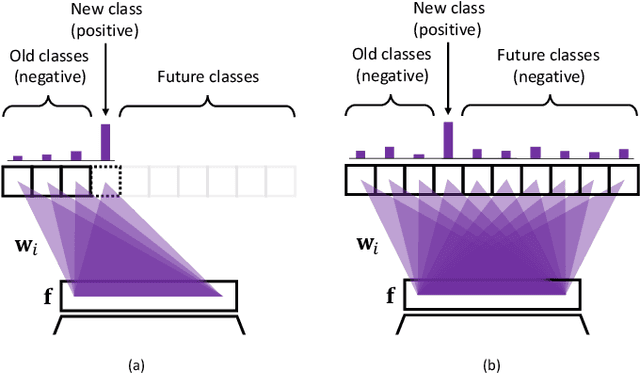
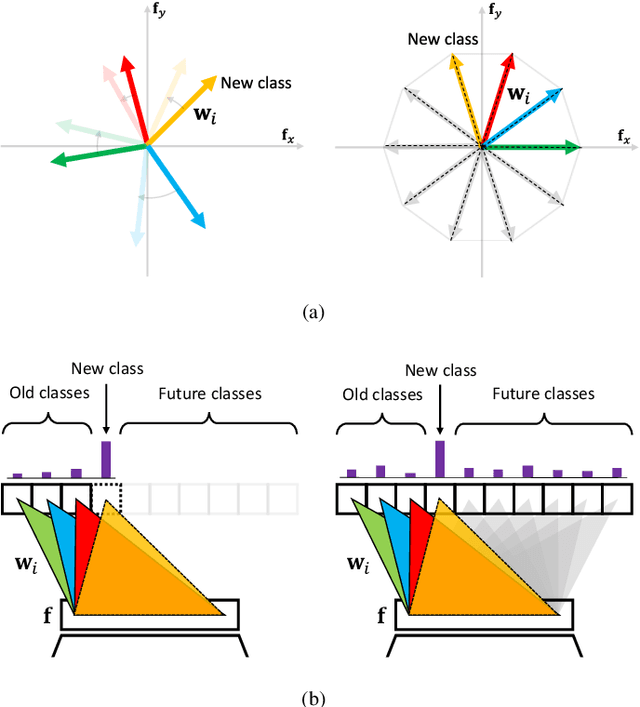

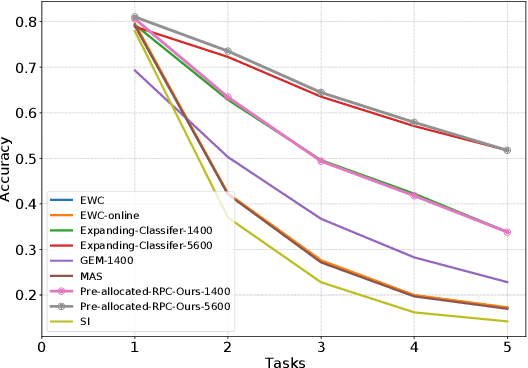
Abstract:In class-incremental learning, a learning agent faces a stream of data with the goal of learning new classes while not forgetting previous ones. Neural networks are known to suffer under this setting, as they forget previously acquired knowledge. To address this problem, effective methods exploit past data stored in an episodic memory while expanding the final classifier nodes to accommodate the new classes. In this work, we substitute the expanding classifier with a novel fixed classifier in which a number of pre-allocated output nodes are subject to the classification loss right from the beginning of the learning phase. Contrarily to the standard expanding classifier, this allows: (a) the output nodes of future unseen classes to firstly see negative samples since the beginning of learning together with the positive samples that incrementally arrive; (b) to learn features that do not change their geometric configuration as novel classes are incorporated in the learning model. Experiments with public datasets show that the proposed approach is as effective as the expanding classifier while exhibiting novel intriguing properties of the internal feature representation that are otherwise not-existent. Our ablation study on pre-allocating a large number of classes further validates the approach.
 Add to Chrome
Add to Chrome Add to Firefox
Add to Firefox Add to Edge
Add to Edge